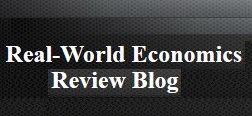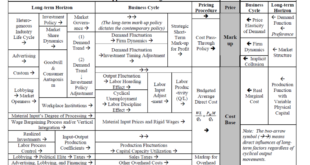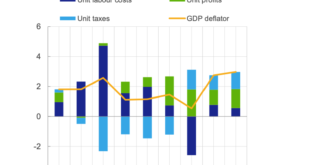from Dean Baker California’s Governor, Gavin Newsom, announced plans last week for the state to set up its own manufacturing facility to produce low-cost insulin for California residents. This is a great idea. Insulin is an old drug that can be produced as a cheap generic, which is the case almost everywhere else in the world. A monthly supply of insulin in Canada costs $12, in Germany $11, and in Italy $10. In the United States, it costs on average around $100, and in many cases, people...
Read More »Towards a ‘periodic table of prices’
I do not have ‘physics envy‘. I do not want economics to look too much like physics. But I do have chemistry envy. I want economics to have something like the magnificent periodic table of elements, for prices. Input prices, output prices, mark up prices, shadow prices, market prices, administered prices, government prices, expenditure prices, asset prices, monopoly prices, monopsony prices – all of these and many more neatly ordered in a relatively simple table. Somebody still has to...
Read More »The ’empirical revolution’ in economics — some critical perspectives
from Lars Syll Most research in economics nowadays involves empirical work … It is therefore odd to find a great deal of economic reasoning still starting from “standard theory”. Whilst it does generate predictions that can be tested empirically, it does not have an empirical foundation, but rather is based on a story about universal human nature … It remains true that the traditional models retain a central place, and accumulating evidence does not tend to lead to the abandonment of a...
Read More »Economics is always ‘political economics’
from Peter Söderbaum Mainstream neoclassical economics is attacked by many and from different angles or vantage points. Neither the defendants nor the critics can claim value-neutrality. “Values are always with us” (Myrdal 1978) and economics is always ‘political economics’. The neoclassical attempt to construct a ‘pure’ economics has failed. Neoclassical theory may still survive as a theory that is specific in scientific and ideological terms and useful for some purposes. But this...
Read More »The magnitude of the required reductions
from Ted Trainer It is not commonly understood how large the reductions would have to be to enable a society that is globally sustainable and just. The World Wildlife Foundation’s Footprint measure (2018) estimates the average Australian per capita use of productive land at 6–8 ha. Thus, if the 9–10 billion people expected to be on earth by 2050 were to live as Australians do now, up to 80 billion ha of productive land would be needed. But there are only about 12 billion ha of productive...
Read More »Weekend read – Danger signals from the crypto casino
from C. P. Chandrasekhar The meltdown in May 2022 in the cryptocurrency world, in which the values of digital coins plunged and rendered some near-worthless, is a wake-up call. It once again shows that cryptocurrencies are nothing but a bunch of insubstantial, digital ‘bits’ created by speculators as ‘coins’ for speculation. Over the years since 2009, when the first bitcoin was minted, privately generated cryptocurrencies have failed to live up to the claim that they offer an...
Read More »Threats to substantive relevance of natural experiments
from Lars Syll External validity poses a challenge for most kinds of research designs, of course. In true experiments in the social sciences, the study group is not usually a random sample from some underlying population. Often, the study group consists instead of a convenience sample, that is, a group of units that have been “drawn” through some nonrandom process from an underlying population. In other studies, one cannot even readily claim that the study group has been drawn from any...
Read More »COVID and the broken global order
from C. P. Chandrasekhar When the COVID pandemic affected every one of the world’s nations, the way forward seemed obvious, even if difficult to traverse. Given the rapid spread of the disease and its severity that overwhelmed long neglected health systems, and the cost to lives and livelihoods that shutdowns of economic and social activity implied, quick access to drugs and vaccines to manage the pandemic were crucial. Fortunately, government support for biotech research, in general, and...
Read More »real-world economics review issue no. 100
real-world economics review issue no. 100 download whole issue Introduction to RWER issue 100 3 Real Science Is Pluralist issue no. 5 – 2001Edward Fullbrook 5 Is There Anything Worth Keeping in Standard Microeconomics? issue no. 12 – 2002Bernard Guerrien 11 How Reality Ate Itself: Orthodoxy, Economy & Trust issue no. 18 – 2003Jamie Morgan 14 What is Neoclassical Economics? issue no. 6 – 2006Christian...
Read More »Inflation: should we take away the soup bowl?
The graph below has been constructed by economists of the European Central Bank. It’s based on national accounts data. It shows that present day inflation is profit driven, not wage driven. Money flows to profits, not wages. What does this mean for monetary, fiscal and income policy, taking some other aspects of inflation into consideration? Quite a lot. High central bank interest rates have a dual purpose. First, they are intended to show that central banks are serious. Let’s...
Read More » Real-World Economics Review
Real-World Economics Review



